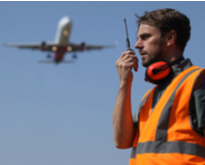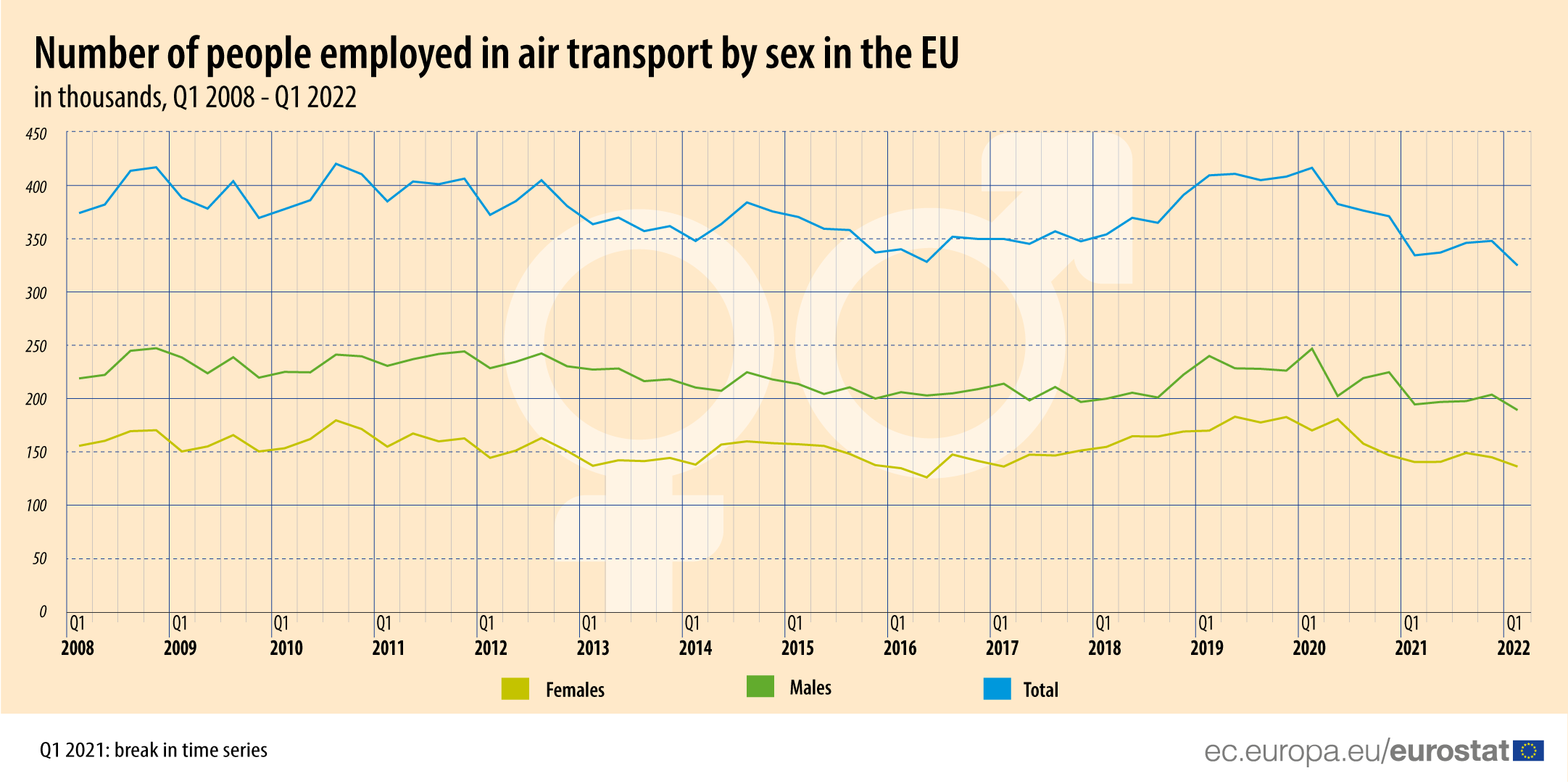The COVID-19 crisis introduced far-reaching effects on the economy, with air transport in particular hit hard by a decline in passengers. Airlines and associated enterprises reduced the number of their employed people accordingly, with younger workers particularly affected.
Source dataset: lfsq_egan22d
In the first quarter of 2022, 325 600 people were employed in the air transport sector in the EU. This is the lowest number recorded in 14 years. Notably, the decrease can be attributed to workers between the ages of 15 and 39 (from 204 400 in Q1 2008, to 121 400 in Q1 2022; -83 000). Meanwhile, there was an increase, although milder, in workers between 40 and 64 years old (from 170 500 to 204 200; +33 700).
The pattern was similar when comparing the pre-pandemic first quarter of 2019 with the first quarter of 2022. While there was a large decrease in workers aged between 15 and 39 (from 184 900 to 121 400; -63 500), there was a far smaller decrease in workers between the ages of 40 and 64 (from 225 500 to 204 200; -21 300).
Source dataset: lfsq_egan22d
When comparing employment by sex, males made up 58% of the work force in the first quarter of 2022. This same balance was also recorded in the first quarter of 2008. The share of men in air transport was rather stable over time.
However, while total employment in air transport in the EU decreased for both males and females during the pandemic, men were the first impacted in the second quarter of 2020, leading to a share of men equal to 53% in the second quarter of 2020. Then, in the third and fourth quarters of 2020, women were the most affected by the pandemic. Over the whole period between the first quarter of 2019 and the first quarter of 2022, males made up 60% of the decrease (-33 800 for females compared with -50 900 for males).
For more information:
- Dedicated section on the EU Labour Force Survey
- Statistics Explained article on Employment – annual statistics
- Statistics Explained article on Key figures on the changes to the labour market
- Statistics Explained article on EU labour force survey
- Database on EU Labour Force Survey
- Education Corner workbook on the labour market
Methodological notes:
- Air transport, as defined under the NACE Rev.2 classification, includes the transport of passengers or freight by air or via space.
- Data come from the Labour Force Survey (LFS) and are not seasonally adjusted.
- Q1 2021: break in time series. The break is explained in the associated Statistics Explained article.
To contact us, please visit our User Support page.
For press queries, please contact our Media Support.



